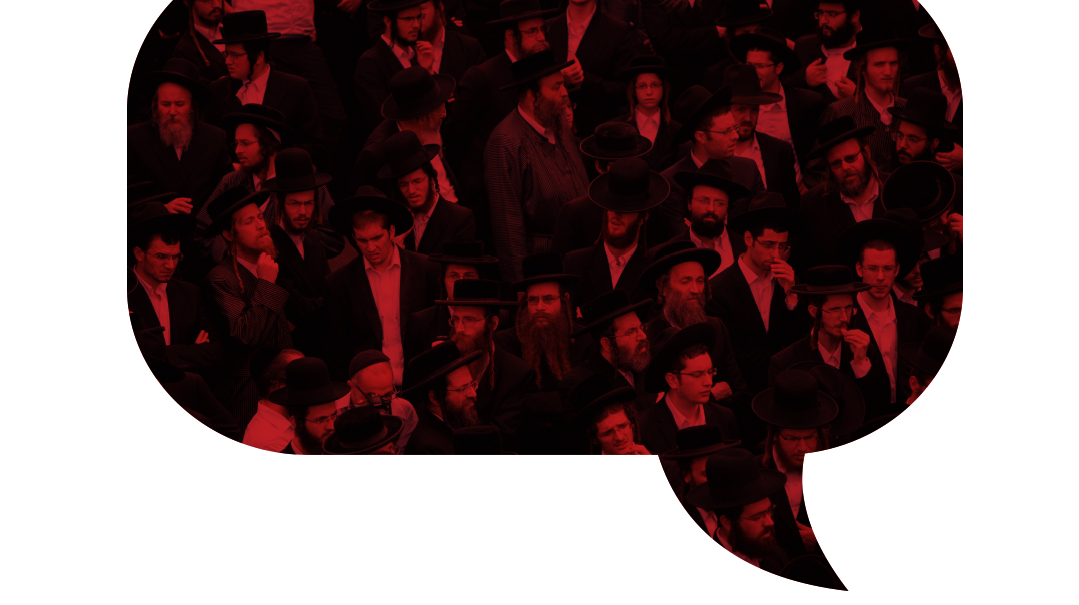Goodbye, Shul of Summer

I
t’s not easy to say goodbye to summer — not to the pace, not to the weather, not to the mood.
And personally, I’m having a hard time saying goodbye to my summertime shul.
My family spent the summer months in Monsey, and three times a day, I davened in a shul that is really just a cottage with a tent in its backyard (the official name is Ohr Chaim, though most people call it Scheiner’s, in tribute to its visionary founder, Reb Leizer), with dirt paths and leafy trees and picnic tables all around it.
And for eight weeks, again and again, I marveled at the place and what it tells us about ourselves.
It has a bit of the Chol-Hamoed-trip, side-of-the-road minyan feel, with the chein and charm and appeal that these all-Jews-of-all-sorts minyanim engender, yet in a setting that is dignified and respectful.
No one talks during davening or shuffles from foot to foot, or even (and this is noteworthy) pulls out his phone to look, again, at his screensaver or review the text from his wife about picking up two milks on the way home.
Why? Maybe because they all feel it’s theirs? That no one is the guest, the prop, the outsider benefitting from a minyan formed by others?
Scheiner’s welcomes all Jews, but I don’t mean that in the new-agey, enchanted tale, come-as-you-are way. I mean they welcome all Jews in that there is no “type.” The nusach is Sefard, it’s true, but the vibe is all-inclusive. (Wrapping up my tefillin one morning, I noticed a chassidishe guy dressed like he just came from Mezhibuzh circa 1755, his eyes shining, his freshly immersed wet peyos loose and flowing. Next to him stood a guy in super-tight jeans who looked like he walked out of an Adidas commercial, the brim of his baseball cap pulled so low it touched his sunglasses. The Mezhibuzh wagon-driver could barely read the Hebrew brachah on tefillin, and the smooth-faced model was a Booreech-Atoo guy. Who knew? Whoever knows?)
There’s nothing “chilled” about this minyan. No one’s looking for reasons to skip Tachanun or do hoiche Kedushah, and they don’t make good-natured jokes about the workload. The minyanim start on time, precisely, and no one is standing around crowding the back of the room, held back by the phobia that sometimes keeps people out of the first three rows at other shuls.
It’s a real shul, with real decorum — just that it’s for everyone.
There are pragmatic features, of course, that make Scheiner’s pleasant and convenient. Not just free coffee. The large fridge is stocked with cold water bottles there for the taking, and tureens of hot soup made fresh daily. And there’s an outdoor keilim mikveh that you can back your car up to. (Which reminds me of an old theory: The reason we buy dishes and cutlery for newly married couples is because who wants to go up and down steps heaving cases of Corelle dishes that may or may not be used, ripping off tiny stickers in steamy mikveh rooms? This is something a man will do while he’s just out of sheva brachos, but after shanah rishonah, it’s unlikely to happen. Buy them while there’s still someone to toivel them.)
They’ve eliminated the single biggest stress-inducer at most shuls; here, there’s not only ample parking, but a uniformed attendant who keeps things moving and orderly.
They print a very popular shul newsletter, called B.E.T., which stands for “bringing everyone together.” Clearly, they’re betting it’s possible to do that. (The motto “Bringing Out of Town, In Town” is cute, but with all due respect, Monsey was never “in town.” Any town whose busiest thoroughfare is called Main Street cannot be called “in town” by serious people.)
Meshulachim, the stream of collectors falling in as if from a conveyor belt, aren’t seen as a nuisance at Scheiner’s, but as a gift. When someone stands up before Aleinu and interrupts the davening “just for a minute, rabboisai, please hear me out, rachmanim bnei rachmanim,” people don’t mutter.
But most of all, what makes my summer shul special is a feeling connected with the minhag instituted by the Ari Hakadosh, who told his talmidim to recite the words “Hareini mekabel alai mitzvas aseh shel v’ahavta l’reiacha kamocha” before starting Shacharis.
The Kitzur Shulchan Aruch (12:2), explains: “Unity and connection in the lower realms creates a bond in the higher spheres as well, and the tefillos join together and are beloved by Hashem.”
It’s the feeling of connection that a Jew experiences as he walks into shul — a cheerful good morning from one, the careful birchos hashachar of another, the middle-aged man helping his aged father with his tallis, the shared zechusim of each one coming together not as disparate points of light, but as a roaring fire.
At 18 Forshay Road, you can pretend you’re in Lubavitch or Satmar or any Young Israel or Agudah minyan, and see the people there to prove it.
Thank you, my summertime shul, thank you to the rabbanim, gabbaim, sponsors, and all those who invest so much work in keeping the shul going. It’s not summertime anymore, but it’s the perfect season in which to share its secret.
What really makes Ohr Chaim special is the Jews. And guess what? You can find them in pretty much any shul.
You just have to know how to look.
(Originally featured in Mishpacha, Issue 724)
Oops! We could not locate your form.








